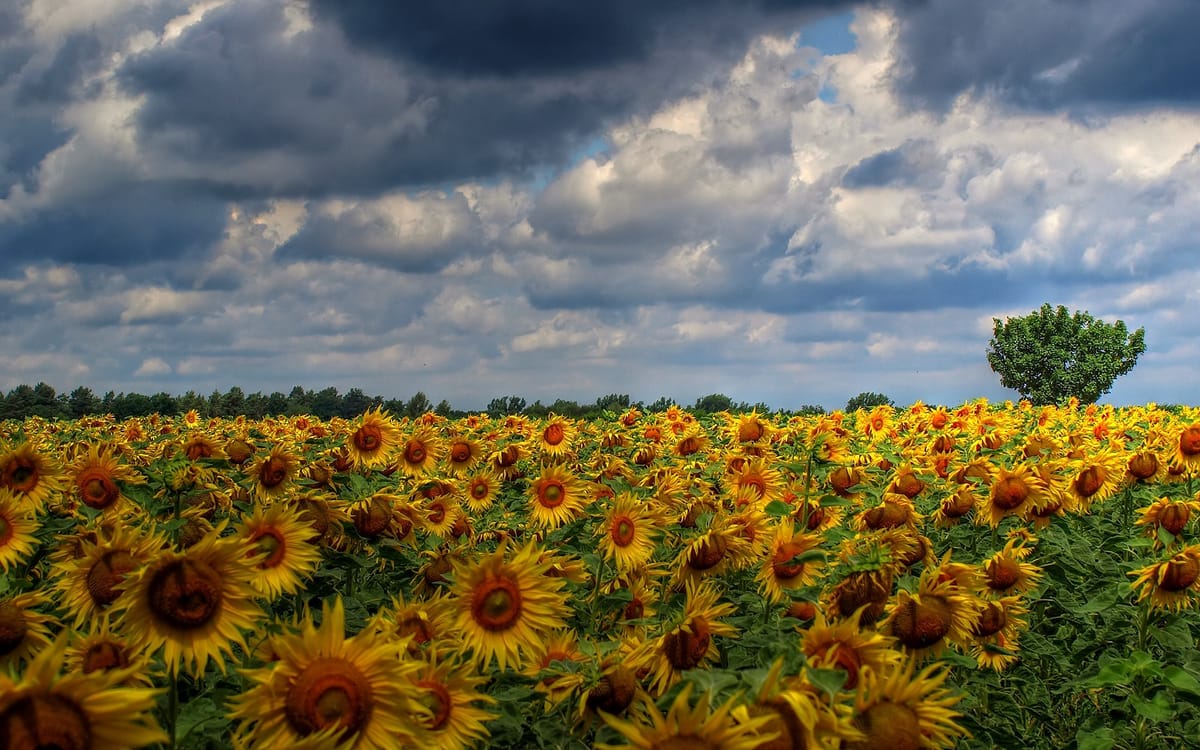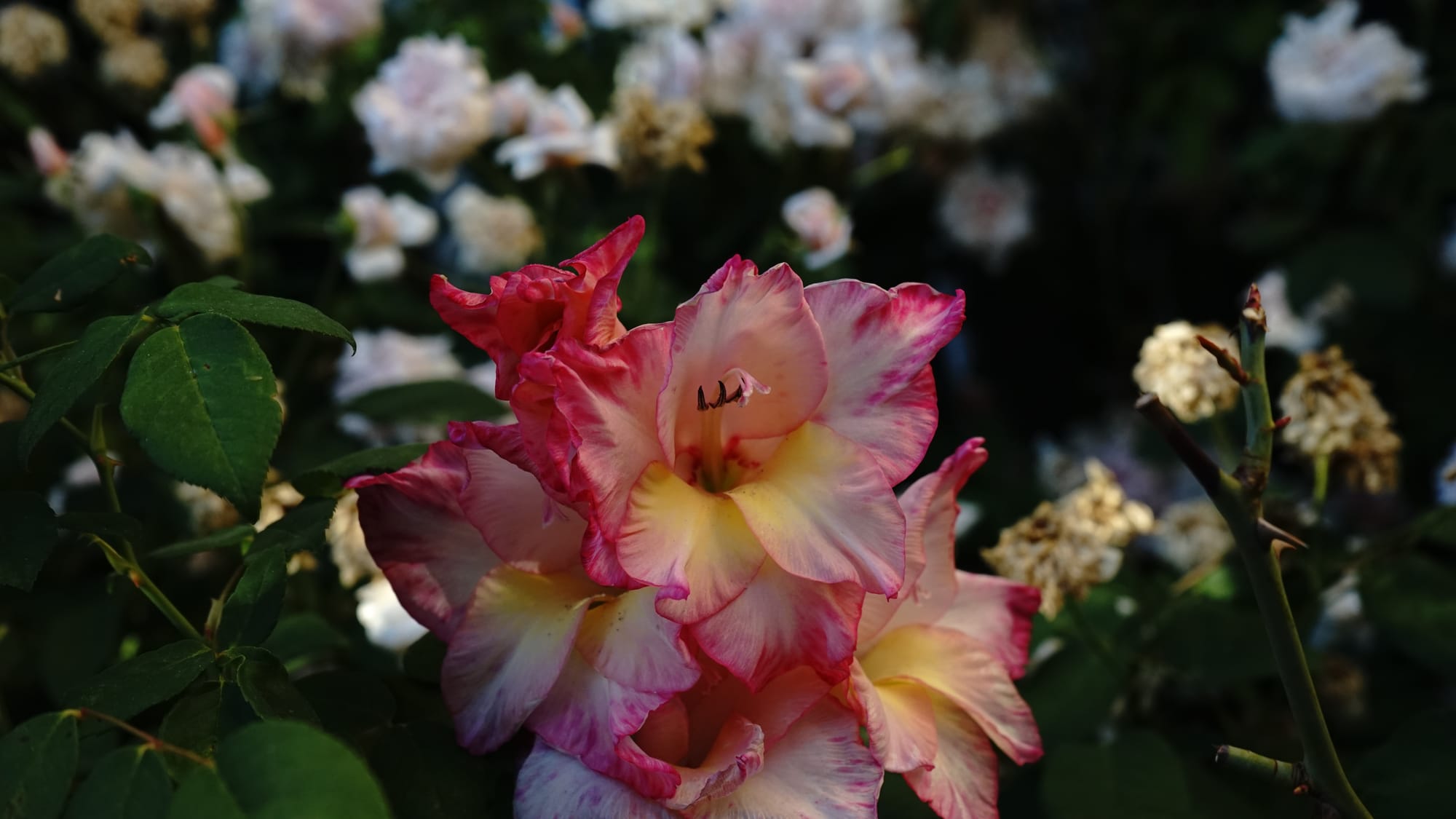
The point of this particular article isn't to explain exactly how to get the perfect soil for your garden. It's to put a highlight on something gardeners think they're paying close attention to, but might not exactly be executing things in the right way. Or they can't quite put their finger on it, but for some reason, plants are growing quite well in one area of the yard but not so great in another.
I regularly see photos posted on places like Facebook where someone has a compost pile and some pretty nice flowers or vegetables grow out of it. Usually by accident. Because it has so much of the right elements for contributing to plant growth, it's particularly easy for a random seed to germinate and thrive in compost. Despite not being deliberately planted, watered, fertilized and maintained by a gardener.
In the real world garden, the problems can be many. Every plant has a range of conditions it finds either poor but manageable, decent, or amazing. There's a good chance you're growing more than one variety of a flower, which can mean you're putting several things together in "acceptable" conditions where they are all able to grow, but they can't all excel.
We're dealing with all sorts of issues with plants as it relates to the soil. Some have deeper root systems. There are different plant heights. Some plants need a lot more nutrient dense soil. Some plants appear to be able to grow under almost any conditions you throw at them. And you can have a lot more issues if you live in an extreme environment like the desert or far north.
The common zinnia is so popular because it has the ability to adapt to almost any soil conditions. I've grown it all over the place, in different climates, clay soil, sandy soil, and perfect rich bagged soil in metal garden beds. If a plant is categorized as "invasive," it might also be able to grow really well in a range of soil conditions. But we don't want invasive plants in our garden. Zinnias are not invasive, but if you've ever dealt with an invasive plant, you know that once they get established, they are hard to get rid of.
What we really want are the usual plants we all love, but we want them to THRIVE. We don't want the process to be exhausting and tedious. And if you're a beginner trying to get this figured out, it can be difficult.
Much of the way I learned about how to garden came from trying all kinds of things and observing what failed and what succeeded. One classic example was in a spring when I planted a selection of my favorite sunflowers in just the right spot. I should say, the right spot I wanted to see them. Then a few months later in early July, I planted leftover sunflower seeds based solely on the fact the pack of seeds said they would have the shortest time from germination to bloom. I had an empty spot and wanted to fill it up with something, without much time left in the growing season. They were not the biggest and best varieties. I planted the second set of sunflowers about 50 feet away from the first batch I started in mid April. These plants were all in the SAME yard. The first batch I had tediously worked bagged soil into the ground, but it was still a little on the clay side and firm. The second batch I planted in the ground, did no amending at all, but the soil was more balanced in the texture. Not much clay. No added nutrients at all. But supportive soil that was lighter than clay, but not sandy, if I could describe it somehow.
A few weeks later, the second batch was as big as the first batch. And soon, much bigger. But the stalks on the second batch were 2 - 3 times as thick. They were almost like young trees. They were growing not only fast, but very strong and vigorous. The soil texture in the same yard varied enough that I would be seen as some amazing master gardener by anyone seeing the second batch. And I fully thought the first batch was going to be spectacular, but all I got was a spectacular letdown. Sunflowers often need to be supported, but most of these just flopped over en masse. The flowers were small, even though many of the seeds I planted were giants. Meanwhile, the second batch was all small to medium sized blooms, and they were bigger blooms than the giants.

Plants like zinnias, daylilies, lilies and gladiolas did great in garden number one with the extra clay. You can of course do soil tests to gain more insight into what's happening. But it can come down to things like the texture of your soil and how deep that texture goes below ground. And what's happening in that soil.
When I grew using metal garden beds for a couple years, I had superb results growing flowers like dahlias and zinnias. But the cannas planted right next to the garden beds in the ground barely managed to flower, if at all. They likely would have grown like nobody's business in the garden bed.
What I'm saying might seem totally obvious to any seasoned gardener. You have great soil, you'll have great plants. But it can at times be more "abstract" than you might think. Are there more earthworms living in one part of your yard? Is the drainage better in one place vs. the other? Was the garden tilled manually by shovel or by tractor? Are flowers with deep roots able to move through the soil easily, but also be able to support the stalks of the plant? If your soil isn't dense enough, your plants can more easily flop over because there's nothing to grab on to with the roots. If it's too dense, the roots are stunted and unable to take the plant to its full growth potential.
Much of this is trial and error. When I moved from one house to another over the years, things would always change in terms of the garden soil. It would change enough that I'd have to relearn how to grow plants in that area. Even if you're moving 5 blocks away, the soil may be different.
The real gardening magic happens when you have the right plant with just the right soil. And those plants grow like gangbusters. I used to think one good way to make decisions on what will grow in your own yard is to look around town and see what's growing in other people's yards. But now I've become aware that soil is in a sense a living organism of itself. And that community of everything from worms to bacteria is constantly evolving. If you move 10 feet away, you might find the conditions have changed. You have to find out what works well with that soil composition and texture in that specific area.
Taking all of this into consideration helps me improve my gardening from year to year. Once I identify where, for example, the dahlias will grow, that's where I plant them for success. And with many of my plants like zinnias and daylilies, it doesn't matter. They can fill in those difficult spots and be perfectly fine. In fact, those conditions might even be useful to rein in some of your more enthusiastically-growing plants.
This has happened several times at a couple of the homes I've lived in over the years. There is often one spot or zone that produces amazing plants, and the rest of the yard is a struggle at best. And the average gardener may not necessarily want to dig up their entire yard and replace with truckloads of rich, black garden soil. So don't be frustrated as you begin to garden. Observe what is working and use that as your roadmap.
© Copyright Terry Aley
The Aley Acres seed shop on Etsy.
Dahlias, Notes from a Gardener book on Amazon.
Floral Art and Landscape Painting Etsy shop.
TikTok, some gardening posts.
